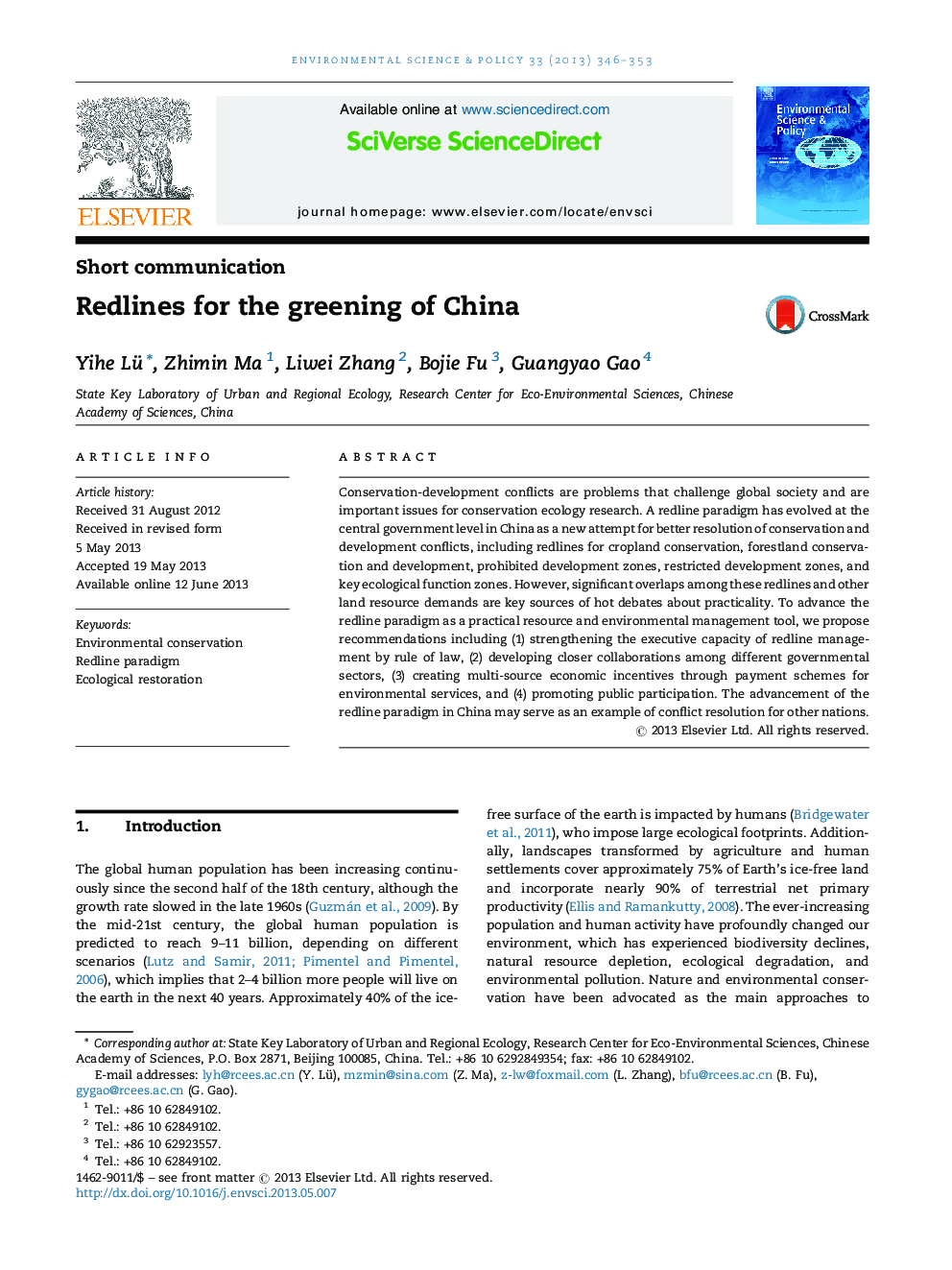| Article ID | Journal | Published Year | Pages | File Type |
|---|---|---|---|---|
| 1053666 | Environmental Science & Policy | 2013 | 8 Pages |
•A redline paradigm has evolved in environmental governance for the greening of China.•Overlaps exist among current conservation redlines that compete with other land uses.•Such overlaps and competitions lead to conflicts violating redline practicality.•We provided four recommendations for ensuring redline management effectiveness.
Conservation-development conflicts are problems that challenge global society and are important issues for conservation ecology research. A redline paradigm has evolved at the central government level in China as a new attempt for better resolution of conservation and development conflicts, including redlines for cropland conservation, forestland conservation and development, prohibited development zones, restricted development zones, and key ecological function zones. However, significant overlaps among these redlines and other land resource demands are key sources of hot debates about practicality. To advance the redline paradigm as a practical resource and environmental management tool, we propose recommendations including (1) strengthening the executive capacity of redline management by rule of law, (2) developing closer collaborations among different governmental sectors, (3) creating multi-source economic incentives through payment schemes for environmental services, and (4) promoting public participation. The advancement of the redline paradigm in China may serve as an example of conflict resolution for other nations.
